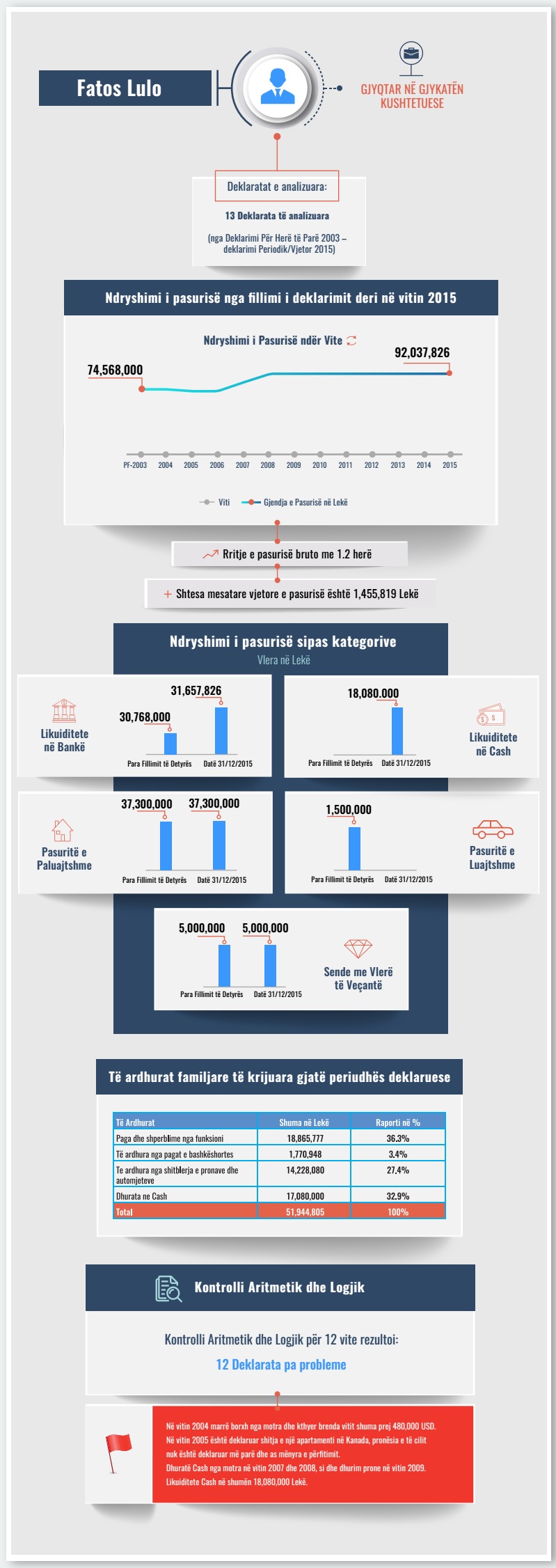Constitutional Court member Fatos Lulo is the first judge to hold a hearing with the Independent Qualification Commission on Wednesday as part of the vetting process. Lulo practiced as a lawyer and a member of the National Radio and Television Council before joining the judiciary as a member of the Supreme Court in 2005. Since 2013, he has served as a member of the Constitutional Court.
Property analysis is one of the three pillars of reassessment for judges, along with image control and professional skills assessment. The graphic chart shows the change in assets of Judge Fatos Lulo over the years 2003-2015.

This report was produced following the administration of the asset declarations of this entity by the High Inspectorate of Declaration and Audit of Assets and Conflicts of Interest, HIDAACI. It aims to make transparency about the property of judges and prosecutors subject to the vetting process.
The data analyzed show that Judge Lulo declared assets worth about ALL 74.5 million in 2003, while at the end of 2015 his assets amounted to ALL 92 million. Lulo has recorded an average increase in assets of 1.4 million ALL annually.
The Constitutional Court member’s family income consists of about 40 percent of salary and bonuses, 32.9 percent of cash gifts, and 27 percent of property and vehicle sales. Gifts from the sister occupy a significant portion of his wealth; $ 100,000 cash in 2007, another $ 100,000 cash in 2008, and a gift office in 2009.
The cash donations triggered the launch of a HLDKPKI property audit against Lulo in 2012. This verification did not work.
In addition to the analysis of asset growth / decrease, asset and income structure, this report also presents the artistic / logical control of the entity’s statements and the ‘red flags’ identified during the audit. One of the “red flags evidenced in the case of Lulo is the accumulated value of cash declared over the years, which at the end of 2015 amounted to about ALL 18 million.
As this report is based on statistical data analyzed through a database, it does not infer the subject property whether it is legal or not, but seeks to inform the public of the public official’s declared property in a simple format and graphically understandable.














